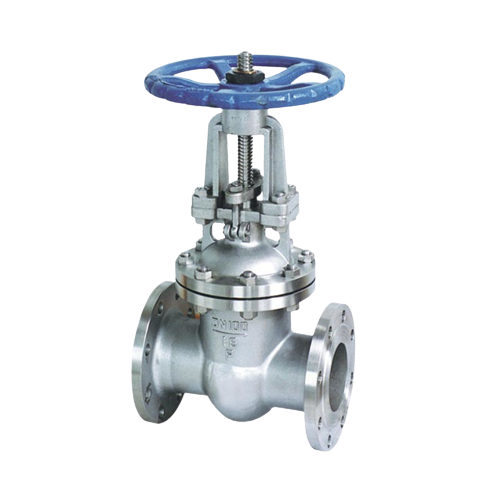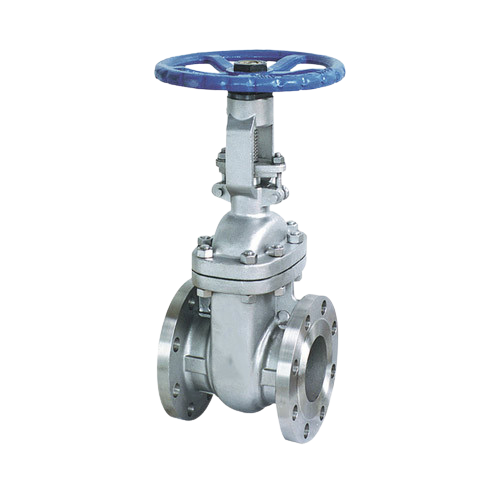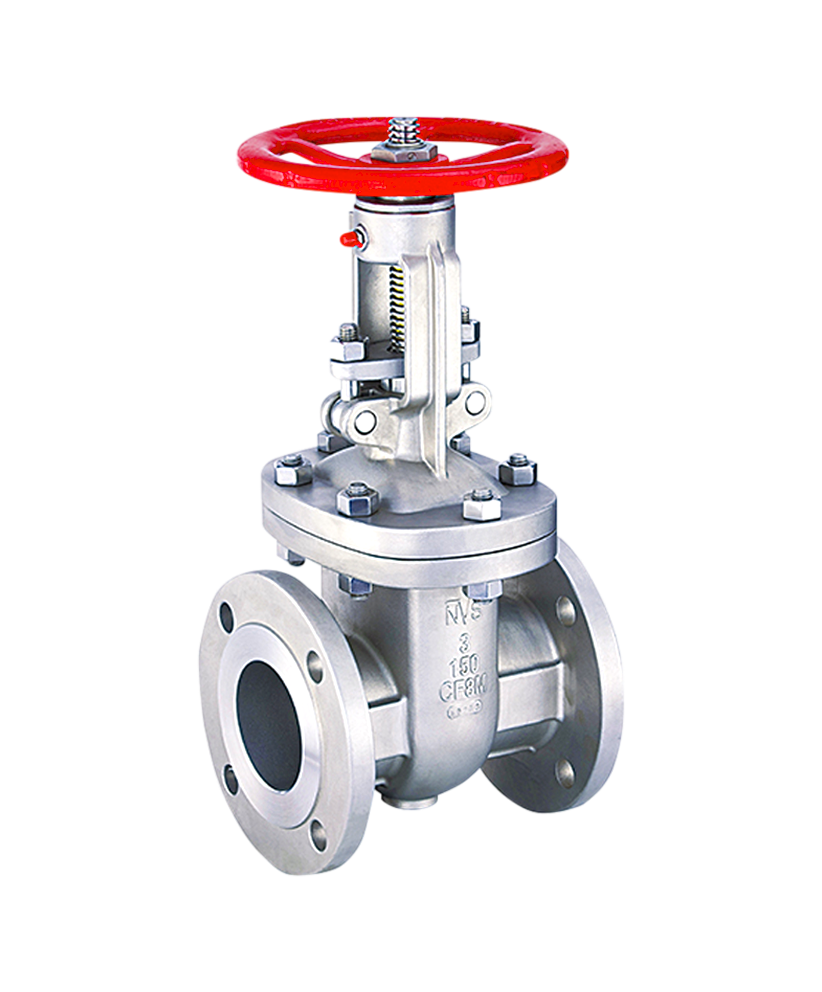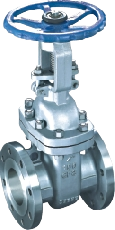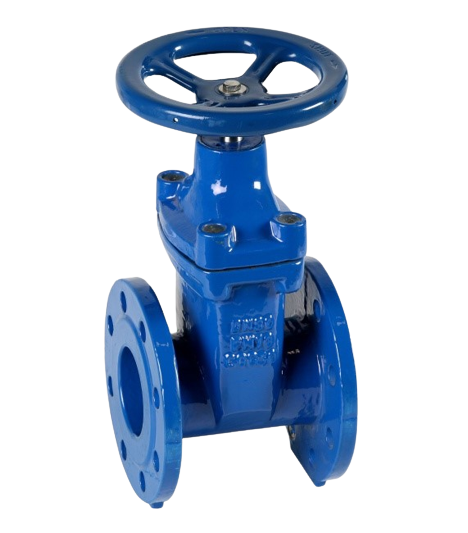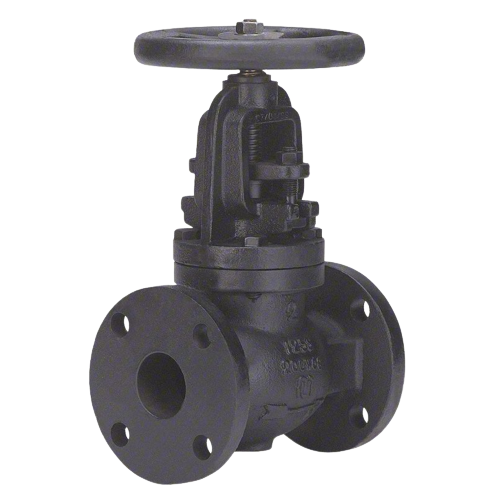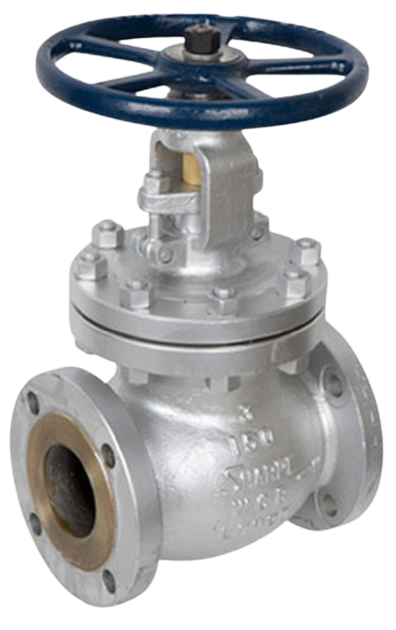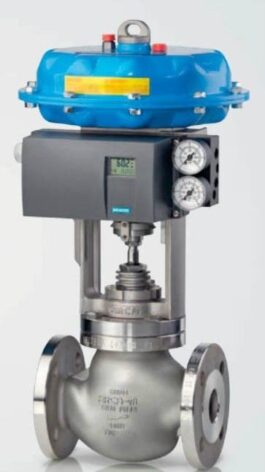Gate Valves
Gate valves are essential components in fluid control systems, designed to regulate the flow of liquids or gases within pipelines. These valves feature a gate or wedge-shaped disk that moves perpendicular to the flow, either allowing fluid to pass through or blocking it entirely. Gate valves are well-known for their excellent shut-off capabilities, effectively sealing off the flow when fully closed to prevent leakage. They offer minimal pressure drop when fully open, ensuring efficient flow rates through the pipeline. Gate valves are commonly used in industries such as oil and gas, water treatment, power generation, and more, where on-off control of fluid flow is required. They are versatile, bi-directional valves that can operate in both directions, making them suitable for a wide range of applications. From managing the flow of water in municipal systems to controlling the flow of chemicals in industrial processes, gate valves play a crucial role in ensuring safe and efficient operation of fluid systems.
Description
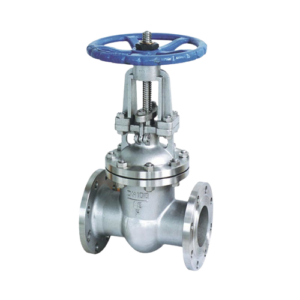 A gate valve is a type of valve that uses a gate or wedge-shaped disk to control the flow of fluid through a pipeline. The gate is raised to allow flow or lowered to shut off the flow completely. Gate valves provide a tight seal when fully closed. This is also used to prevent leakage, and offer efficient shut-off capabilities.
A gate valve is a type of valve that uses a gate or wedge-shaped disk to control the flow of fluid through a pipeline. The gate is raised to allow flow or lowered to shut off the flow completely. Gate valves provide a tight seal when fully closed. This is also used to prevent leakage, and offer efficient shut-off capabilities.
Gate valves are typically used in applications where a straight-line fluid flows. It is also used when the minimum restriction is desired. They are often used in systems that require full flow or no flow conditions, rather than needing throttling capabilities. Gate valves are commonly found in oil and gas, water and wastewater treatment, power generation, and more.
These valves operate by either a handwheel or an actuator to move the gate up and down inside the valve body. Also, when the gate is lifted, the fluid can flow through the valve without obstruction. Furthermore, conversely, lowering the gate blocks the flow completely, providing a secure closure. Finally, gate valves are bi-directional and can be used to control the flow in both directions.
Overall, gate valves are essential components in fluid control systems. This offers reliable shut-off capabilities and versatility in various industrial applications.
How Gate Valves Work
When the handwheel or actuator is turned or activated, the stem is raised or lowered, moving the gate up or down. In addition, in the fully open position, the gate is completely lifted out of the flow path, allowing maximum flow through the valve. Moreover, in the fully closed position, the gate is lowered to create a seal against the seat, stopping the flow of fluid. Finally, the linear motion of the gate (up and down) allows for quick and positive shut-off. This makes gate valves ideal for applications where tight shut-off is required.
Components
Body: The main body of the valve that houses the internal components and provides the connection points for the pipeline.
Bonnet: The cover that encloses the internal components of the valve and provides a seal to prevent leakage.
Gate: The moving element that controls the flow of fluid. It can be a solid wedge, flexible wedge, or split wedge depending on the design of the valve.
Stem: The shaft that connects the handwheel or actuator to the gate, allowing for the opening and closing of the valve.
Seat: The sealing surface where the gate makes contact to shut off the flow of fluid.
Packing: The material used to seal the space between the stem and the bonnet, preventing fluid from leaking out around the stem.
Handwheel or Actuator: The mechanism used to operate the valve manually (handwheel) or automatically (actuator).
Understanding the construction and operation of gate valves is crucial for proper installation. It is also crucial for maintenance and performance in fluid control systems.
Specifications
Q&A
Q: What is a gate valve?
A: A gate valve is a type of valve that uses a gate or wedge-shaped disk to control the flow of fluid through a pipeline. It is opened by lifting the gate to allow flow and closed by lowering the gate to shut off the flow completely.
Q: What are the main applications of gate valves?
A: Gate valves are commonly used in industries such as oil and gas, water and wastewater treatment, power generation, and chemical processing where on-off control of fluid flow is required.
Q: How does a gate valve differ from a globe valve?
A: Unlike globe valves that throttle or regulate flow, gate valves are designed for full open or full close operations. Gate valves provide a straight-line flow path when fully open, while globe valves offer more control over flow rates.
Q: What are the advantages of using gate valves?
A: The advantages of gate valves include efficient shut-off capabilities, minimal pressure drop when fully open, bi-directional flow control, and a tight seal to prevent leakage.
Q: What are some common types of gate valves?
A: Common types of gate valves include rising stem gate valves, non-rising stem gate valves, knife gate valves, slab gate valves, and pressure seal gate valves, each designed for specific applications and conditions.
Q: How are gate valves operated?
A: Gate valves can be operated manually using a handwheel or automatically using actuators such as electric, pneumatic, or hydraulic actuators to open and close the valve.
Feel free to ask more specific questions if you have any!
Advantages / Disadvantages
Advantages of Gate Valves
Excellent Shut-Off Capabilities: Gate valves provide a tight seal when fully closed, preventing leakage of fluid.
Minimal Pressure Drop: When fully open, gate valves offer minimal obstruction to flow, resulting in a low-pressure drop across the valve.
Bi-Directional Service: Gate valves can be used to control flow in both directions, providing versatility in system design.
Full Flow Passage: Gate valves offer a straight-line flow path when fully open, allowing maximum flow efficiency.
Reliable and Durable: Gate valves are known for their robust construction and long service life, making them suitable for various applications.
Disadvantages of Gate Valves
Slow Operation: Gate valves can have slower response times compared to other types of valves due to the linear motion required to open and close the gate.
Limited Throttling Ability: Gate valves are not suited for applications that require flow regulation or throttling since they are designed for on-off control.
Potential for Clogging: Gate valves can be prone to clogging by solid particles or debris in the flow, especially in applications with dirty fluids.
Maintenance Challenges: The internal components of gate valves can be more complex, requiring maintenance and repairs to ensure proper function over time.
Higher Torque Requirements: Gate valves may require significant torque to operate, especially in larger sizes, which can affect the selection of actuators for automation.
Understanding the advantages and disadvantages of gate valves is essential for selecting the right valve for specific applications based on their unique characteristics and limitations.
Applications
Gate valves are commonly used in a variety of applications across different industries due to their specific characteristics and capabilities. Here are some common applications for gate valves:
1. **Water and Wastewater Treatment**: Gate valves are utilized in water treatment plants for regulating the flow of water during filtration, purification, and distribution processes. They are also used in wastewater treatment facilities for controlling the flow of sewage and effluents.
2. **Oil and Gas Industry**: Gate valves play a crucial role in the oil and gas sector for controlling the flow of crude oil, natural gas, and other fluids in pipelines, refineries, and drilling operations.
3. **Power Generation**: Gate valves are used in power plants for various applications, such as controlling the flow of water, steam, and other fluids in boilers, cooling systems, and turbine systems.
4. **Chemical Processing**: Gate valves are employed in chemical plants for handling corrosive chemicals, acids, and other fluids. They provide reliable shut-off capabilities in critical process lines.
5. **Marine and Shipbuilding**: Gate valves are found in marine applications for regulating the flow of seawater, fuel, and other fluids onboard ships, vessels, and offshore platforms.
6. **Mining Industry**: Gate valves are used in mining operations for controlling the flow of water, slurry, and chemicals in mineral processing, dewatering, and extraction processes.
7. **HVAC Systems**: Gate valves are utilized in heating, ventilation, and air conditioning (HVAC) systems for controlling the flow of water or steam in heating and cooling systems within buildings.
8. **Petrochemical Industry**: Gate valves are essential in petrochemical plants for handling various petrochemical products, gases, and liquids in processing units and pipelines.
9. **Agricultural Irrigation**: Gate valves are employed in irrigation systems for agricultural applications to regulate the flow of water in canals, ditches, and irrigation networks.
10. **Fire Protection Systems**: Gate valves are used in fire protection systems to control the flow of water or extinguishing agents in fire sprinkler systems and hydrants.
These are just a few examples of the diverse applications where gate valves are commonly used to regulate the flow of fluids and provide reliable shut-off capabilities.
Downloads
Drawings
 A gate valve is a type of valve that uses a gate or wedge-shaped disk to control the flow of fluid through a pipeline. The gate is raised to allow flow or lowered to shut off the flow completely. Gate valves provide a tight seal when fully closed. This is also used to prevent leakage, and offer efficient shut-off capabilities.
A gate valve is a type of valve that uses a gate or wedge-shaped disk to control the flow of fluid through a pipeline. The gate is raised to allow flow or lowered to shut off the flow completely. Gate valves provide a tight seal when fully closed. This is also used to prevent leakage, and offer efficient shut-off capabilities.
